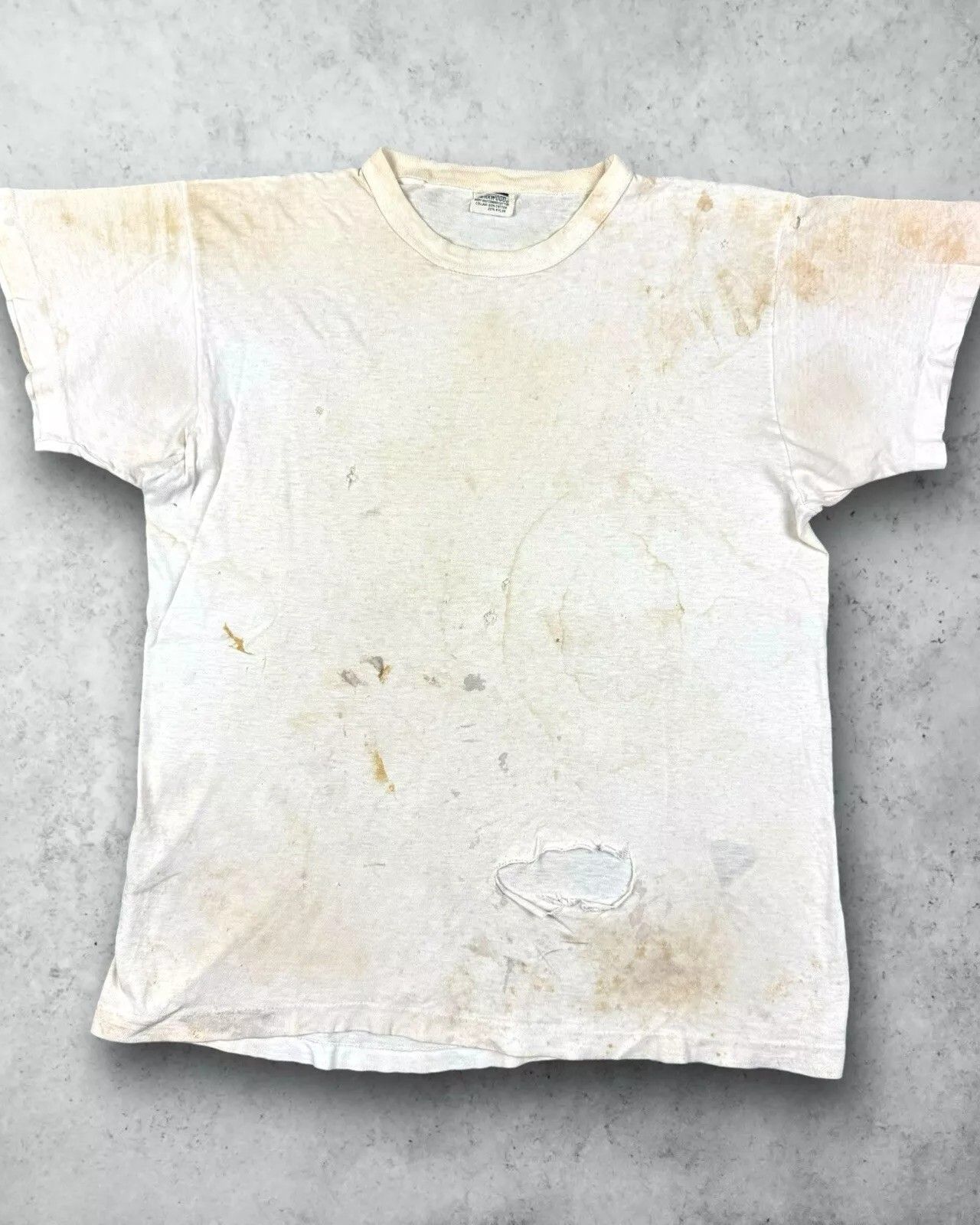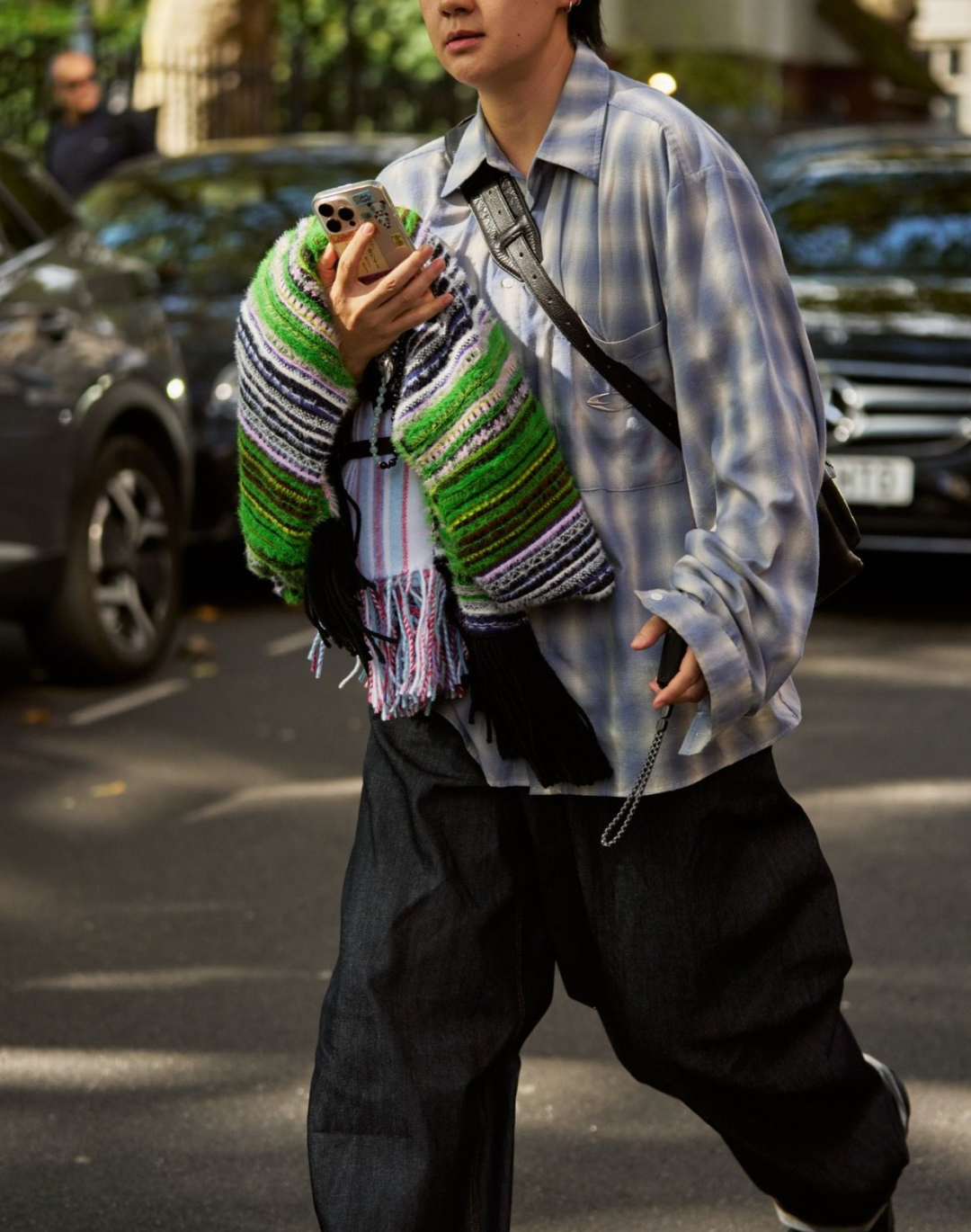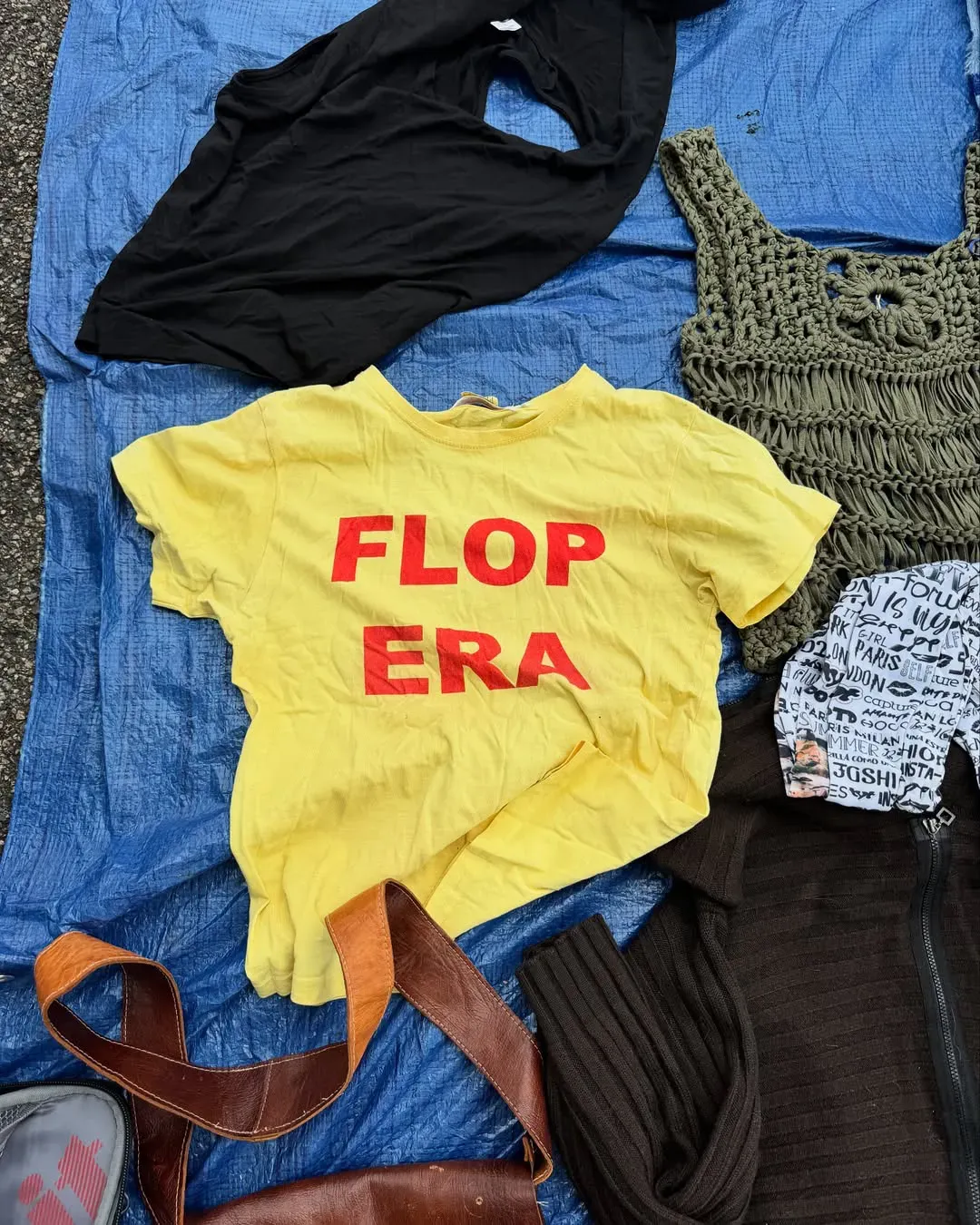
Would you ever pay 150$ for t-shirt? There's who would
In the world of vintage, strange passions exist. Some collect based on decade or year, while others seek garments produced by a specific type of loom or a certain country. But while sophisticated or historical garments once topped wishlists, a new category has emerged: destroyed white t-shirts. An essential building block of any workwear wardrobe (and for a long period, a symbol of a certain blue-collar proletariat that has become absolutely cool over time), the white t-shirt might at first glance seem like one of those garments that should always be bought new: because white t-shirts wear out more than others and due to their simplicity and interchangeability, they are often considered as one another. However, while a more knowledgeable collector might appreciate the type of weave, fit, or specific details, many vintage world novices seem enamored with their worn state, even to the point of making poor deals given that prices often exceed $150 and in some rare cases approach a thousand. Currently, among the listings worth mentioning, there are several JC Penney, Hanes, and Sears white t-shirts from the 1970s on eBay, as well as similar items on Grailed and in some specialized forums. But one thing raises questions: intact t-shirts, white or not, cost very little, while destroyed ones exceed a hundred dollars. We spoke to Giulio Marchioni, a vintage collector and reseller through the page @cocci.it, who explained what lies behind this trend.
For Marchioni, it is not the monochrome t-shirts that deserve attention but their distressed state: «More than white t-shirts, it's destroyed t-shirts that are inflated in price. But when they’re white, the price gets is more noticeable», he explains. «Everything that looks distressed is gaining astonishing value now because the market is headed in that direction». The attention to white shirts, however, has concrete roots: «The basic theme is the differentiation between shirts produced in the 1950s and 1960s and those produced later. Earlier shirts were made of 100% cotton, whereas later, they became half cotton and half polyester because they hold their shape better, feel nicer to the touch, and are much less prone to damage. All cotton shirts became threadbare and wore out much earlier, so it’s easy to find shirts that are sixty years old with holes and that kind of distressing», says Marchioni, explaining that for these older white shirts, «sun exposure gives fading effects much more pronounced compared to mixed shirts. The trend started with both elements: shirts from the 1950s, 1960s, and even 1970s, all worn out, with incredible fades and holes. Then they gained value». Until then, however, prices hadn't soared – at least until some sellers saw a business opportunity. «With the hype around this style, everyone is damaging or fading their own items in artificial ways, so the line between what’s naturally worn and what’s created for the market blurs».
@thepreluv Are distress tees coming back? Brb doing this to all my tees now hope to see some of your works, DM me so I can share it! #wearwhatyouLUV #diy #fashion #fashionhacks #tshirtdesign original sound - PreLuv
In short, it’s the hype and the attempt to (pardon the term) capitalize on a recent clientele, uncritical and eager to jump on the latest trend, that has created this phenomenon of simple ruined shirts. «All those sky-high prices that defy the logic of the vintage market», Marchioni explains, «aren't pieces with true value in the actual market. They are there to capture an audience that doesn’t understand and just wants that destroyed effect. There may be shirts only fifteen or ten years old that have been intentionally damaged». According to Marchioni, however, the distressing trend has yet to reach its peak – at which point we should also see a craze for splattering, like paint or color stains, as seen with Helmut Lang’s jeans in the 1990s. Fashion, in fact,the first to simulate distressing: there was Raf Simons back in 2002, who created a “used” effect by damaging pieces from his most famous FW02 collection titled Virginia Creeper; more recently, brands like Diesel and Balenciaga have heavily embroidered on damaged clothing, but in contemporary culture, it was mainly Our Legacy that had the insight to digitally print distressing on actually intact denim, giving the entire process of historical falsification a new and brilliant conceptual support. In short: if the vintage white t-shirt you want to buy is worn out like a rag, it's probably a rag.















































